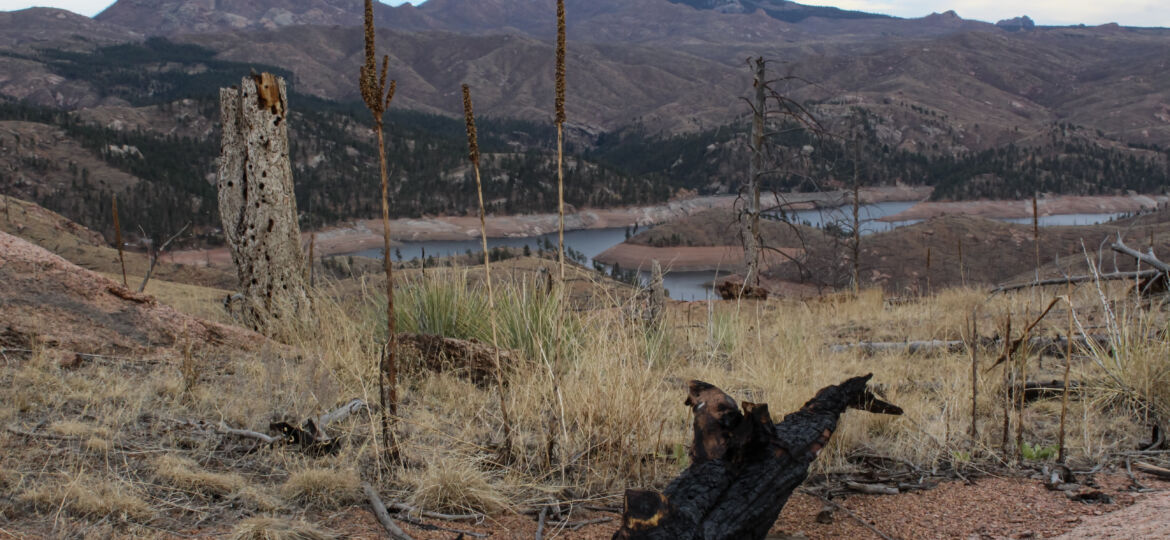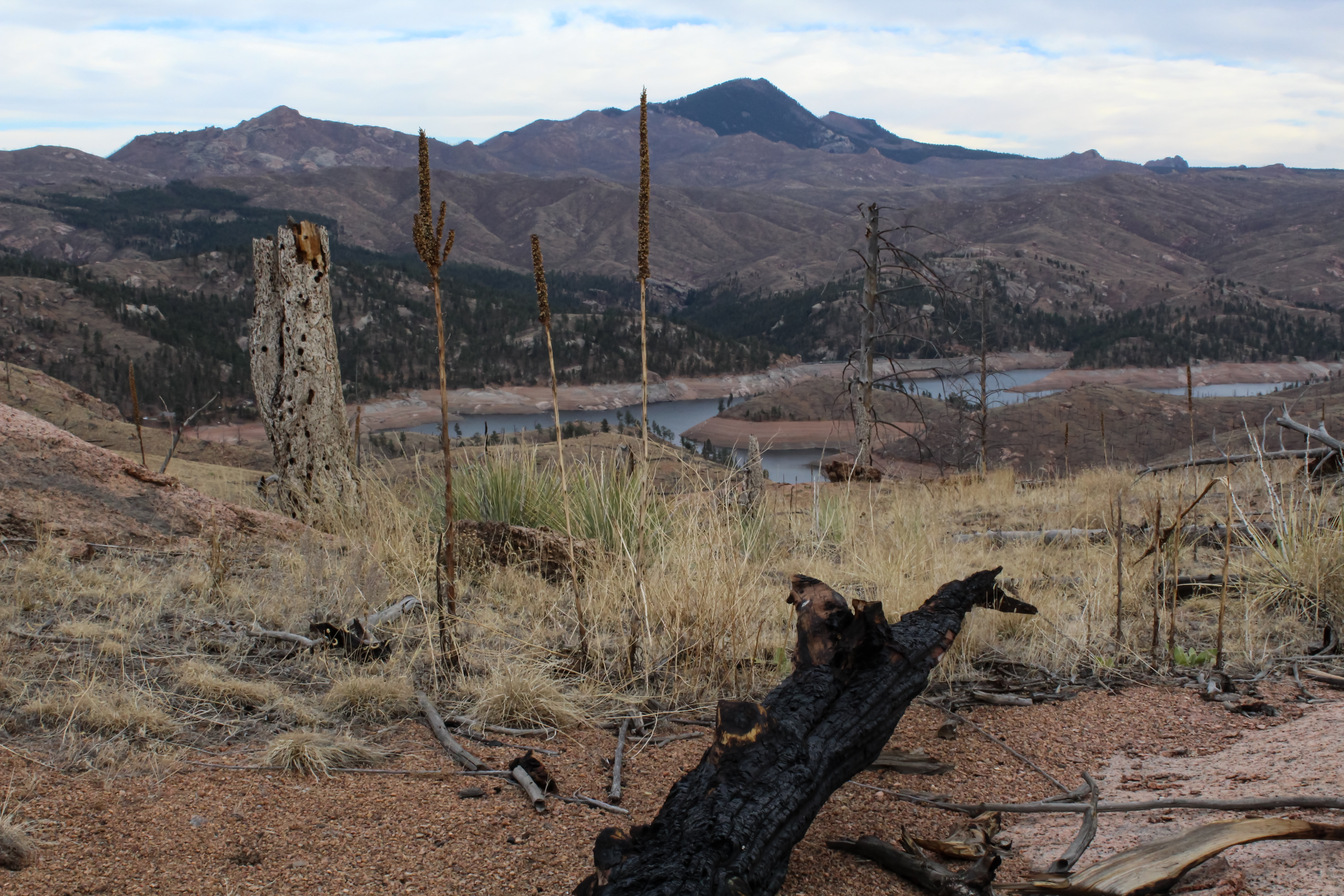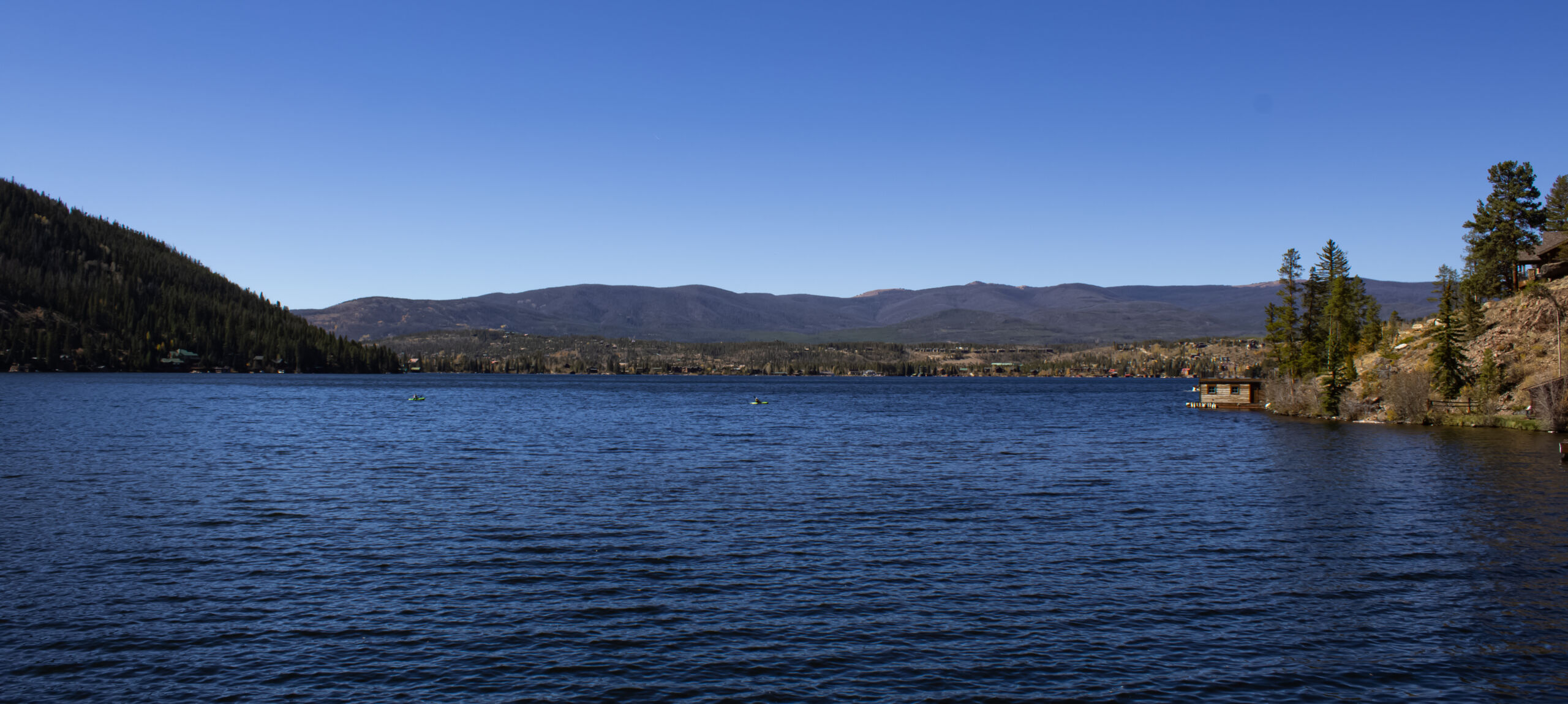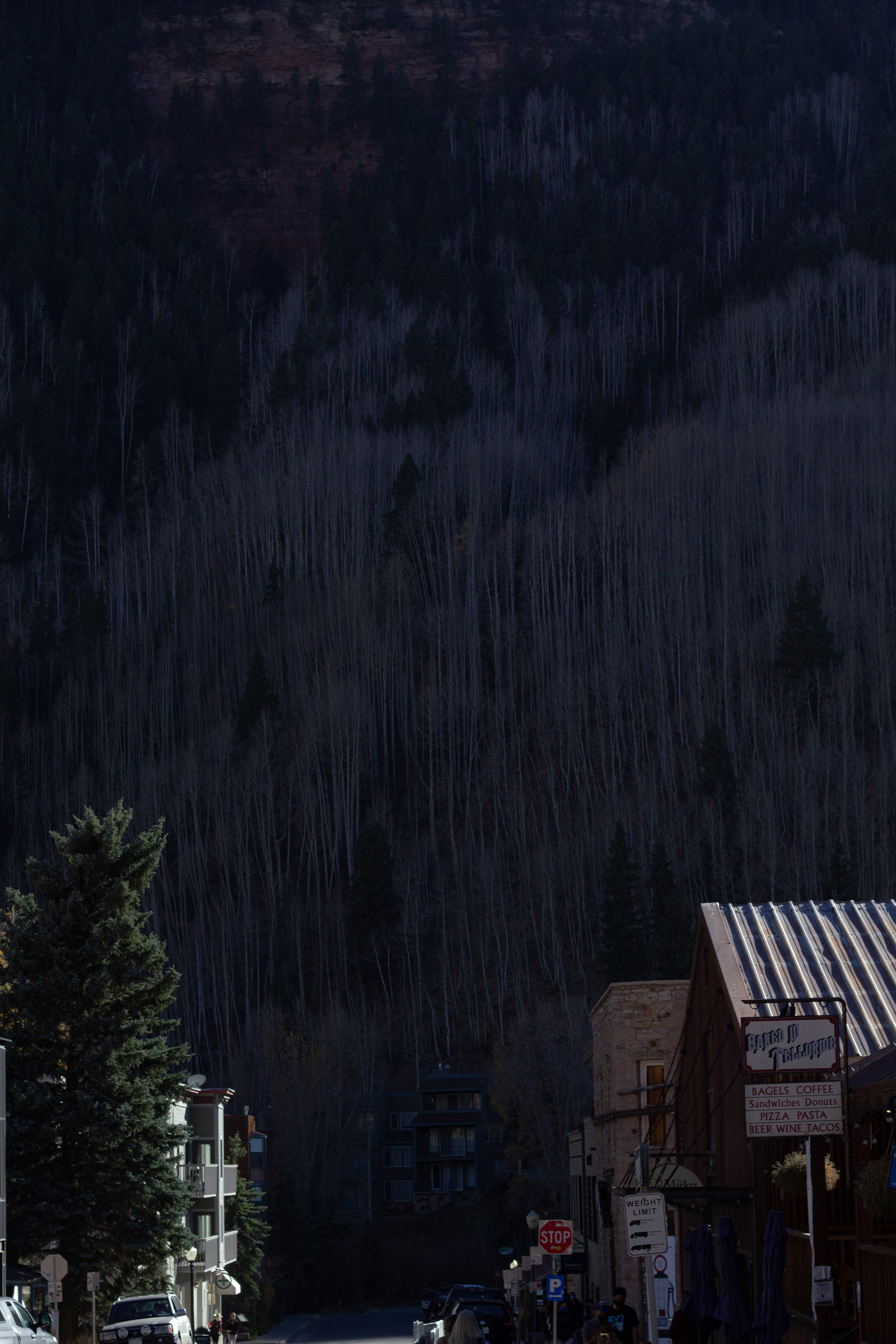
Attributes and Effects of United States Wildfires: Land Use and Management
Two of the largest wildfires in Colorado’s history happened in 2020—alongside national and global burns, creating questions for the future of social and ecological health.
Wildfires in the West sculpt the landscape seen today; the location of the burns will determine if health or harm will come for humans in the aftermath. Federal agencies are tasked with handling significant amounts of land across the West while homeowners and local governments attempt to work together to mitigate potential hazardous wildfires.
Ben Yellin, the wildland fire captain for Conifer, CO’s Elk Creek Fire sat alongside Bethany Urban, public information officer and paramedic as they drove back from 35 days in Oregon and California this fall.
“We are just coming off the August Complex, which is the largest in California’s history. Before that it was the Beachie Creek and the Lionshead fire out of Detroit, Oregon,” Yellin said.
Urban and Yellin were assigned to a level 5 National Interagency Coordination Center dispatch. During a level 5, all available resources are utilized across the nation by federal coordination to fight fires.
“I personally enjoy being assigned on fires around the country. When we get home I think it will be 35 days that we have been out so it gets long, we miss our people, we miss our dogs,” Urban said. “I think right now knowing what is going on in Colorado we are happy to be getting home to assist in our own state. I imagine some or all of us will be out after a couple days of rest.”
The Colorado Forest Restoration Institute was founded in 2004 with federal funding and a mission to help ecosystems, utilities and communities cope with the issues of wildfires. Tony Cheng is the institute’s director and a Colorado State University forestry professor.
“The forest would not be what they are if it were not for fire—current fire and past fire,” Cheng said. “There’s kind of this irony, that for forests to thrive and be sustainable they have to die off occasionally from fire and insect outbreaks like we have seen with the spruce beetle and mountain pine beetle.”
Cheng’s responsibility is working with his teams to approach communities, understand their mutually agreed upon social and economic values, search through large existing practices then create contingency plans with expected consequences of each path chosen. Usually his work manifests itself in urban and regional comprehensive planning, working its way into the natural and built environments of Colorado. He recognizes his work is on the scale of 5,000 to 10,000 acre projects when the fires are burning at an order of magnitude bigger, such as the Cameron Peak fire this year at over 200,000 acres. Voicing the need for fire so certain tree species can reproduce, Cheng also sees many of the forests in the West are ready to burn as a part of a natural ecological cycle.
“The term mega-fire really happened after the Hayman fire in Colorado, which was the largest fire until this year,” Yellin said. “On a western landscape scale it is basically what California has been seeing, it is basically every other large fire of the state and western state we have had over the last 20 years.”

Yellin explains the front range trend is actually happening on a national and global scale. Beside the need for fire, federal agencies are tasked with managing a significant amount of land across the nation which needs to burn. According to Cheng and Yellin, most fire prevention needs are within the human built hazard areas.
“If we identify the problem, we still need to come up with creative solutions to fix that problem,” Yellin said.
Professor of Urban and Regional Planning at University of Colorado Denver, Andrew Rumbach, notes Boulder does a good job of preventing growth within the potential hazard areas.
Hazard areas are created when land is adjacent to or within wildland areas, such as forests, protected lands, open spaces, watersheds or parks. Yellin realized during his urban and regional planning consultant career, prior to becoming a wildland fire captain, hazard areas are defined by different stakeholders in conflicting ways or sometimes not at all. The general trend in Colorado is 50% of new housing is built in a zone that could produce a potential hazard.
“About 30 years ago I built a cabin up near Tabernash in the forest closer to the continental divide,” said Sven Steinmo. “Like everywhere in that area, we were surrounded by lodge poles, most of which are now dead. I’ve cleared at least 200 trees from around our place, but there are thousands upon thousands around us outside of my property.”
Owning property next to Forest Service land while having trees and other foliage on his property, Steinmo is one of Colorado’s 2 million residents as of 2010 in a potential hazard area. He believes the Forest Service is doing the best they can given their resources.
“It is going to take landscape scale mitigation work, but it also goes down to the homeowners as well,” Yellin said. “Localities and municipalities need to do what they should be doing, counties need to do what they need to do, all of that boils down to political action.”
Cheng recognizes forest management would not want to fight all fires, but they are also coping with a lack of resources. Most of the money is spent mitigating fires that could spread to highly populated areas because of legal and political liability. Fire does not understand property ownership and does not stop at political lines, it can burn into a community from a lightning strike in open space, or it can burn from a house into forests. The fuel loads for wildfires are Cheng’s concern when they can hit a community or socially valued asset.
“It has been kind of like a whack-a-mole problem,” Cheng said. “Federal agencies have to prioritize where they are going to do work.”
The United States consists of over 2 trillion acres in total, not including easements of oceans. Land managed directly by five federal agencies, the Bureau of Land Management, Department of Defense, Forest Service, Fish and Wildlife Service and National Parks Service totals 615 million acres. A majority of the land administered by the federal government is located in Western states and Alaska. Cheng and his team with the Colorado Forest Restoration Institute seeks to prevent fires in areas of social risk and economic concern while allowing fires for ecological needs.
“What that [forest mitigation from the federal level] looks like in Colorado is the I-25 corridor up to the mountain divides, kind of the high value Summit County communities, you know the rich ski area communities, and then the Durango area,” Cheng said. “Then everywhere else there is not enough resources to go around especially with regards to fire risk management and forest management.”
Elk Creek Fire belongs to the Upper South Platte Partnership, a roundtable that works with Cheng’s team at the Colorado Forest Restoration Institute along with several other stakeholders. The partnership focuses on protecting a watershed located in the front range of Colorado in order for 80% of Denver’s water to be delivered to metro residents. Fires in the South Platte watershed have cost tens of millions of dollars in mitigation fees. Another area of concern is the development of homes and communities within watersheds. Yellin personally thinks building within watersheds is a poor idea.
“In my opinion we are basically burning hazmats within our watersheds.” Yellin said. “If our houses burn down they are basically timber stacked on top of each other and then covered in a gasoline material and then filled with more products filled with gasoline.”

The need to focus on positive contributions and creativity during the current trend of natural disasters, instead of looking at other stakeholders and blaming them for their past and current decisions is important to Yellin personally. Finding commonalities between groups is the way he sees movement towards solutions in the hazard areas.
Urban and Yellin, approaching Utah, quoted Edward Abbey, “Sentiment without action is the ruin of the soul.”


